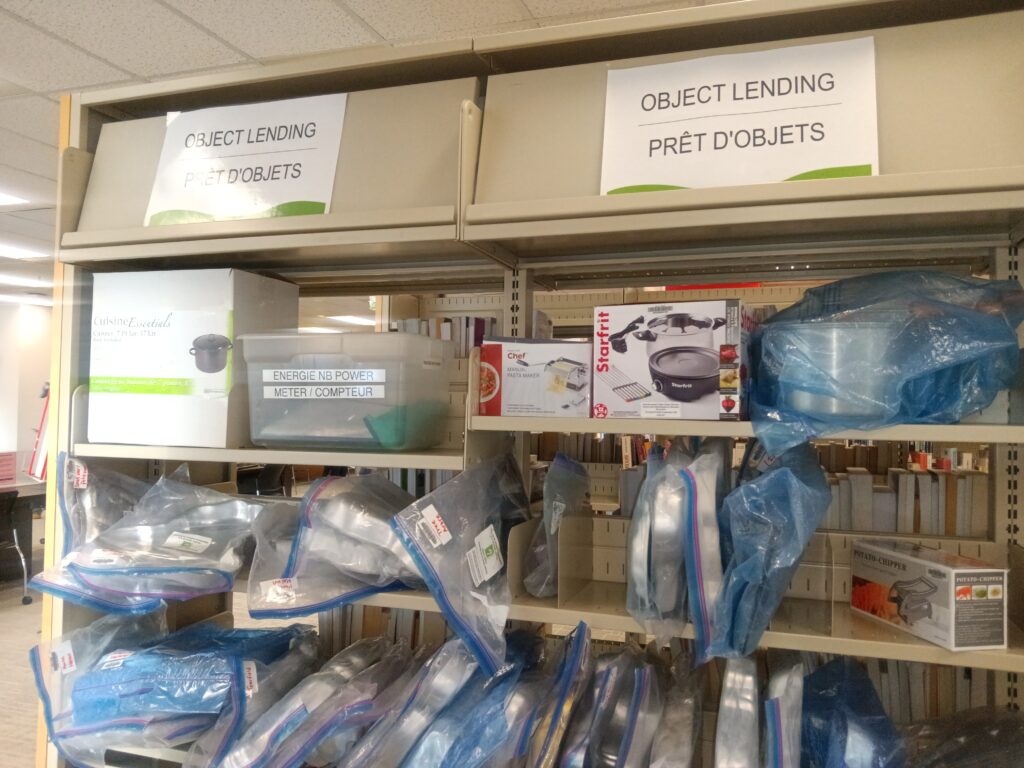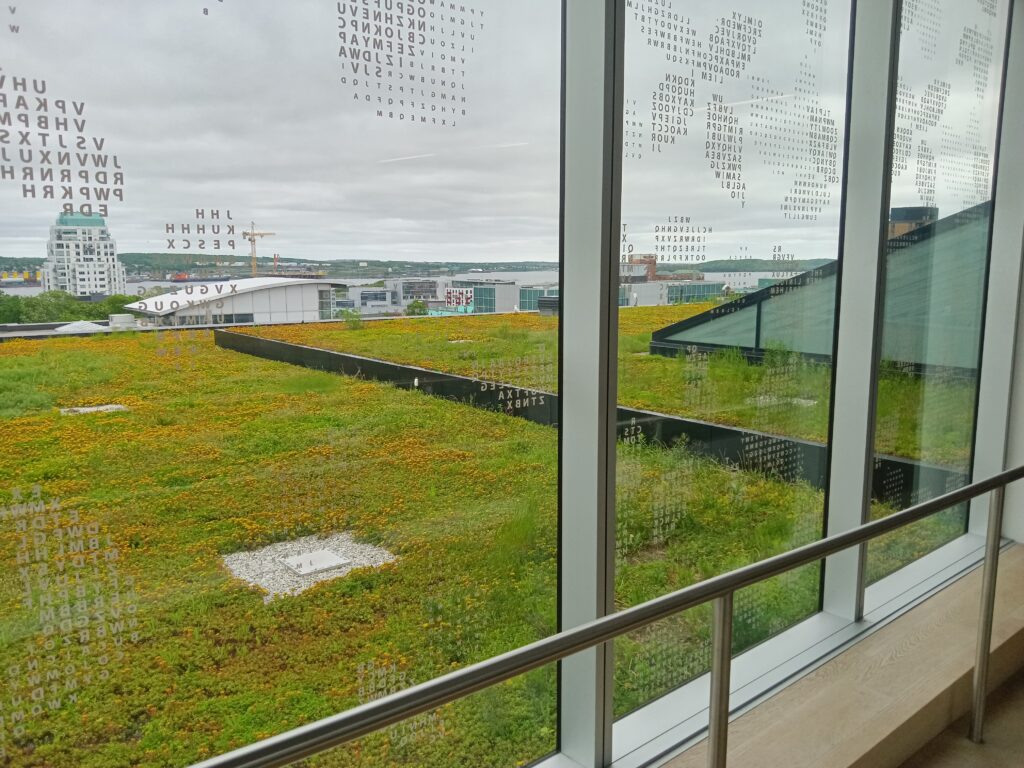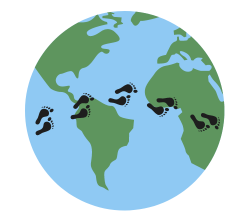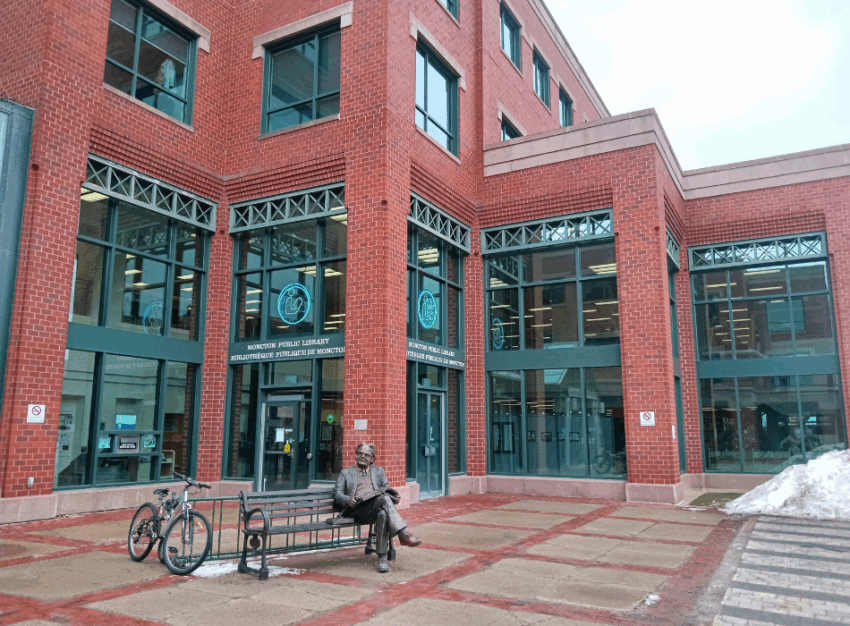When I was a kid, my mother and sister and I would go to our local library every Saturday and return with about 20 books between the three of us (mostly picture books).
As a teenager, I browsed the shelves, hunting for my latest young adult find. I also volunteered at my local branch, helping with programs for children.
Over the years, my relationship with the library has changed. I’ve started to view the library more as a place to study and work than as a place to check out books.
Nonetheless, I’ve always thought of libraries as good places—and places that contribute to sustainable communities. Here’s how!
The connection between libraries and sustainability
One obvious way that libraries help the environment is through shared resources (books and more). However, they contribute to sustainability in other ways as well, including through building community and improving access to information. Read on to find out more!
Libraries offer shared resources

Libraries allow community members to share resources instead of owning them individually. The most obvious example is books, but many libraries also lend out other items like CDs and DVDs, musical instruments, power tools and baking pans.
Libraries allow you to check out an item when you need it, instead of buying and storing a book you’ll only read a couple times or a tool you only use once a year. This reduces waste and the use of paper and other natural resources.
According to BookNet Canada (based on data from 27 public library systems), Canadian libraries reported just over 16 million loans of physical books in the first half of 2024. That’s a whole lot of books that could have been individually owned but were instead shared!
Libraries are free to use
Unlike most other places in our society, public libraries are free to use. In most cases, you don’t need to spend money to physically access their space or use their services and resources.
This free access provides an alternative to consumerism. It also ensures that vulnerable community members have access to shelter, air conditioning, water, washrooms, electrical outlets and the internet.
If you’re curious, you can use this calculator from Vaughan Public Libraries that estimates how much money you save by using the library.
Libraries improve access to information

Libraries make it easier to access information! They’re full of print resources like books, newspapers, magazines and DVDs and increasingly provide access to electronic resources like databases, online newspapers, videos and online courses. Librarians are also skilled researchers and happy to help with research questions.
You can use library resources to learn more about the environment and climate change. Some libraries have curated collections about the environment and run environmental programs and workshops. Improving access to reliable information about climate change is particularly important in this age of misinformation and denial of climate science.
Libraries create community and connection
Libraries weave community connections, which we know are important for building resilience to climate change. Through their programs and public spaces, libraries allow you to meet and interact with people you might not otherwise. They can also point you toward community organizations and events.
If you want to participate in an environmental program, chances are you can find something at your local library! From movie screenings and book clubs to community gardens and children’s story time, libraries offer a rich range of programming. Just check their event calendar or bulletin board or ask a librarian!
Libraries are taking action to be more sustainable

Just like other buildings and institutions, libraries have an environmental footprint. They are also taking steps to be more sustainable.
Sustainability actions that libraries are taking include installing recycling bins, conserving water through measures like installing low-flow faucets, and adding green roofs and gardens. Libraries are also doing renovations to be more energy efficient (ex. installing energy-efficient lights, improving insulation, increasing natural light).
The Sustainable Libraries Initiative supports libraries in their sustainability journey and certifies sustainable libraries in the United States.
How libraries help the environment
Libraries help the environment in more ways than you might think! Through providing free access to resources and information and running community programs, libraries reduce waste and build community connections and resilience.
I want to know: How often do you go to the library?
Categories and tags:
Share this post:

